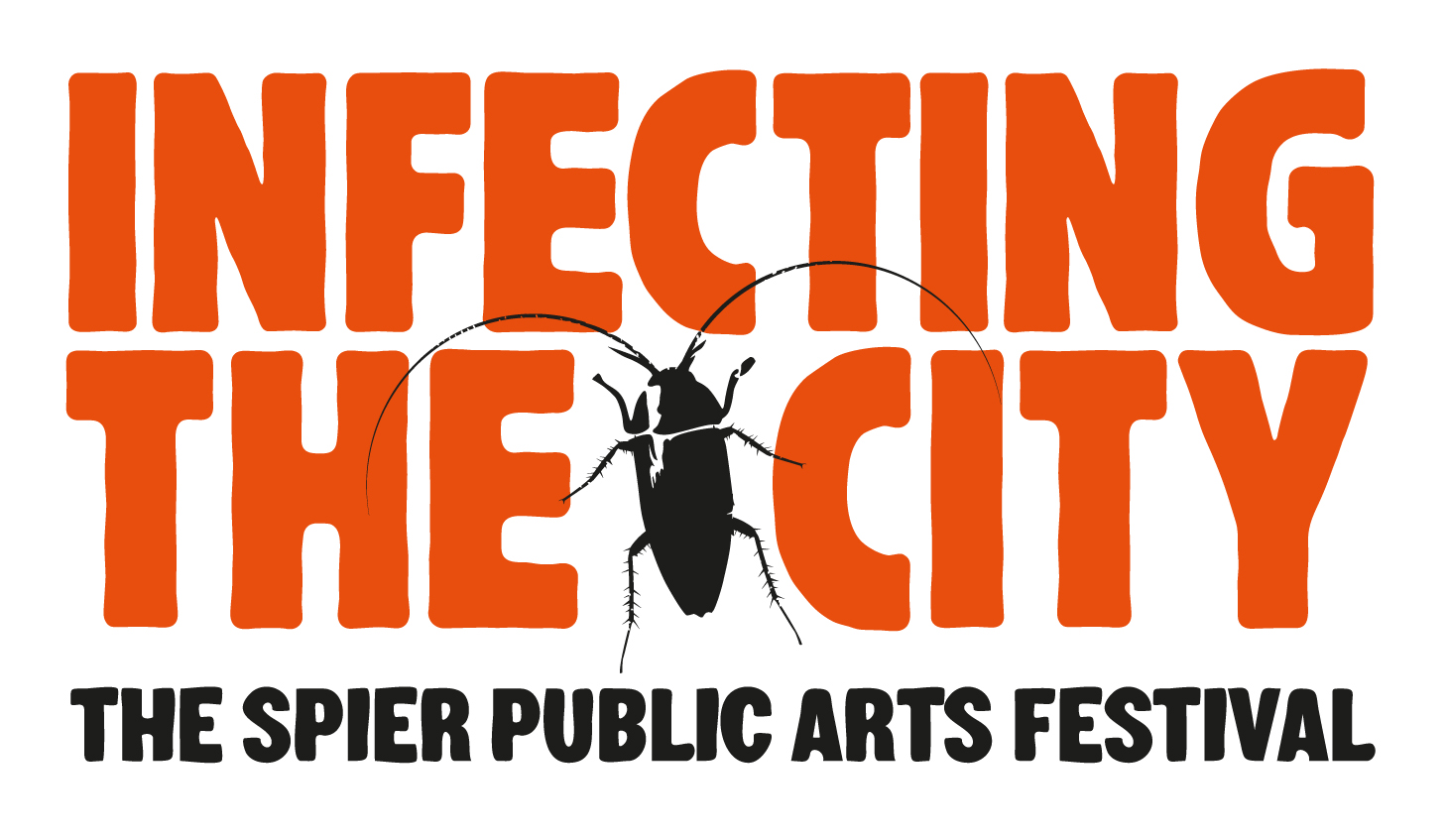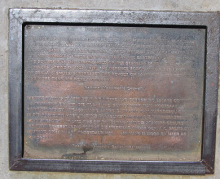|
Hannelie Coetzee
Hannelie Coetzee is a Johannesburg-based visual artist and professional photographer. Her work spans social documentary photography, visual arts, and collaborative art projects. Education Hannelie Coetzee matriculated from Estcourt high School in 1989. Coetzee received a BTech degree in photography from the Vaal University of Technology (1990–1994) and an Advanced Diploma in Fine Arts at Witwatersrand University from the Wits Fine Arts Department (1996–1997). Work Coetzee has worked as a photographer for more than twenty years, specializing in social documentary photography. She has worked alongside Non Governmental Organizations (NGOs) as well as corporate companies to capture their social investment and development projects. She is represented by Aurora Photos in New York. In March 2002, Coetzee launched her first solo exhibition, the Bossie Series at the Bell-Roberts Photographic Gallery in Cape Town. ArtsLink commented that "Even though this series can be described as ... [...More Info...] [...Related Items...] OR: [Wikipedia] [Google] [Baidu] |
Johannesburg
Johannesburg ( , , ; Zulu and xh, eGoli ), colloquially known as Jozi, Joburg, or "The City of Gold", is the largest city in South Africa, classified as a megacity, and is one of the 100 largest urban areas in the world. According to Demographia, the Johannesburg–Pretoria urban area (combined because of strong transport links that make commuting feasible) is the 26th-largest in the world in terms of population, with 14,167,000 inhabitants. It is the provincial capital and largest city of Gauteng, which is the wealthiest province in South Africa. Johannesburg is the seat of the Constitutional Court, the highest court in South Africa. Most of the major South African companies and banks have their head offices in Johannesburg. The city is located in the mineral-rich Witwatersrand range of hills and is the centre of large-scale gold and diamond trade. The city was established in 1886 following the discovery of gold on what had been a farm. Due to the extremely large gold de ... [...More Info...] [...Related Items...] OR: [Wikipedia] [Google] [Baidu] |
Vaal University Of Technology
Vaal University of Technology (VUT) is a tertiary institution in South Africa. It attracts students from all over the country. It is one of the largest residential Universities of Technology, with about 25,000 students, 300 programs, all primarily taught in English. The campus and facilities are conducive to learning, research, recreation and sport, art and culture, and community service. The campuses have lecture halls, laboratories, a number of auditoriums and office space situated on . Four satellite campuses extend the services of the university, at Secunda, Kempton Park, Klerksdorp and Upington. Besides the four faculties, various departments serve its students, catering for their needs. History The forerunner to the Vaal University of Technology was named the Vaal Triangle College for Advanced Technical Education. Situated in Vanderbijlpark in South Africa's industrial heartland, it opened to 189 students (taught by 15 members of staff ) in 1966. Growth was rapid. In 1975 ... [...More Info...] [...Related Items...] OR: [Wikipedia] [Google] [Baidu] |
Witwatersrand University
The University of the Witwatersrand, Johannesburg (), is a multi-campus South African public research university situated in the northern areas of central Johannesburg. It is more commonly known as Wits University or Wits ( or ). The university has its roots in the mining industry, as do Johannesburg and the Witwatersrand in general. Founded in 1896 as the South African School of Mines in Kimberley, it is the third oldest South African university in continuous operation. The university has an enrolment of 40,259 students as of 2018, of which approximately 20 percent live on campus in the university's 17 residences. 63 percent of the university's total enrolment is for undergraduate study, with 35 percent being postgraduate and the remaining 2 percent being Occasional Students. The 2017 Academic Ranking of World Universities (ARWU) places Wits University, with its overall score, as the highest ranked university in Africa. Wits was ranked as the top university in South Africa in ... [...More Info...] [...Related Items...] OR: [Wikipedia] [Google] [Baidu] |
Infecting The City
Held in Cape Town, South Africa Infecting the City is a public arts festival that is committed to making art freely available to everyone. The festival hosts a range of different types of site-specific art, art intervention and performance art in the central part of the city. Each year the festival takes on a social issue or theme which the participating artists respond to. In 2011, the Festival worked with Cape Town's artistic and cultural community to present public art under the theme of Treasure. This theme was intended to celebrate the artistic traditions and contemporary practices of the diverse communities within South Africa and to explore Cape Town's "Afropolitan" reality. Infecting the city is presented by the Africa Centre, a Non-for-profit corporation, non-for-profit organisation that creates a platform for exploring contemporary Pan-African artistic practice as a tool for social change. Infecting the City is an integral part of the city, challenging audiences to noti ... [...More Info...] [...Related Items...] OR: [Wikipedia] [Google] [Baidu] |
Site-specific Art
Site-specific art is artwork created to exist in a certain place. Typically, the artist takes the location into account while planning and creating the artwork. Site-specific art is produced both by commercial artists, and independently, and can include some instances of work such as sculpture, stencil graffiti, rock balancing, and other art forms. Installations can be in urban areas, remote natural settings, or underwater. History The term "site-specific art" was promoted and refined by Californian artist Robert Irwin but it was actually first used in the mid-1970s by young sculptors, such as Patricia Johanson, Dennis Oppenheim, and Athena Tacha, who had started executing public commissions for large urban sites. For ''Two Jumps for Dead Dog Creek'' (1970), Oppenheim attempted a series of standing jumps at a selected site in Idaho, where "the width of the creek became a specific goal to which I geared a bodily activity," with his two successful jumps being "dictated by a land f ... [...More Info...] [...Related Items...] OR: [Wikipedia] [Google] [Baidu] |
Gauteng
Gauteng ( ) is one of the nine provinces of South Africa. The name in Sotho-Tswana languages means 'place of gold'. Situated on the Highveld, Gauteng is the smallest province by land area in South Africa. Although Gauteng accounts for only 1.5% of the country's land area, it is home to more than a quarter of its population (26%). Highly urbanised, the province contains the country's largest city, Johannesburg, which is also one of the largest cities in the world. Gauteng is the wealthiest province in South Africa and is considered as the financial hub of not only South Africa but the entire African continent, mostly concentrated in Johannesburg. It also contains the administrative capital, Pretoria, and other large areas such as Midrand, Vanderbijlpark, Ekurhuleni and the affluent Sandton. Gauteng is the most populous province in South Africa with a population of approximately 16.1 million people according to mid year 2022 estimates. Etymology The name ''Gauteng'' is derived ... [...More Info...] [...Related Items...] OR: [Wikipedia] [Google] [Baidu] |
Fordsburg
Fordsburg is a suburb of Johannesburg, South Africa. It is located in Region 8. Fordsburg is a residential suburb, although housing numerous shops and factories. Today, Fordsburg is a major centre of Indian and Pakistani culture, with a large number of halal restaurants. The Oriental Plaza, located in Fordsburg, was created by the Apartheid government as a large shopping centre for Indian-owned shops, and is a major attraction in Fordsburg. The suburb was portrayed in the 2012 film Material, which highlighted some of the cultural, racial and religious issues still facing South Africa's post-apartheid society From the earliest days of Johannesburg, the suburb housed a large Jewish community - with the Fordsburg/Mayfair Hebrew Congregation established in 189- as well as associated institutions such as a Kashrut#Permitted and forbidden animals, Kosher butchery, chevra kadisha, welfare organisations and Bet midrash. 1922 Miner's strike Fordsburg was the site of a miners st ... [...More Info...] [...Related Items...] OR: [Wikipedia] [Google] [Baidu] |
Braamfontein
Braamfontein (English: ''blackberry spring'', or more prosaicly ''blackberry springs''; also known as Braam) is a central suburb of Johannesburg, in South Africa, seat of the Constitutional Court of South Africa and some of South Africa's major corporations such as Liberty Holdings Limited, JD Group (part of Steinhoff Africa), Sappi, Bidvest (formerly Rennies) Bank and Hollard. Situated due north of the city centre, Braamfontein is the fourth-largest office node in the city of Johannesburg containing many multi-storied buildings representing various architectural styles including Art Deco and Brutalist. Numerous office buildings have and are in the process of being converted to residential apartments. The offices of the Johannesburg City Council and the University of the Witwatersrand are situated in Braamfontein. The Nelson Mandela Bridge is a landmark that connects Braamfontein to the city centre, traversing South Africa's most extensive passenger train marshalling yard. Jan Smut ... [...More Info...] [...Related Items...] OR: [Wikipedia] [Google] [Baidu] |
Living People
Related categories * :Year of birth missing (living people) / :Year of birth unknown * :Date of birth missing (living people) / :Date of birth unknown * :Place of birth missing (living people) / :Place of birth unknown * :Year of death missing / :Year of death unknown * :Date of death missing / :Date of death unknown * :Place of death missing / :Place of death unknown * :Missing middle or first names See also * :Dead people * :Template:L, which generates this category or death years, and birth year and sort keys. : {{DEFAULTSORT:Living people 21st-century people People by status ... [...More Info...] [...Related Items...] OR: [Wikipedia] [Google] [Baidu] |
Artists From Johannesburg
An artist is a person engaged in an activity related to creating art, practicing the arts, or demonstrating an art. The common usage in both everyday speech and academic discourse refers to a practitioner in the visual arts only. However, the term is also often used in the entertainment business, especially in a business context, for musicians and other performers (although less often for actors). "Artiste" (French for artist) is a variant used in English in this context, but this use has become rare. Use of the term "artist" to describe writers is valid, but less common, and mostly restricted to contexts like used in criticism. Dictionary definitions The ''Oxford English Dictionary'' defines the older broad meanings of the term "artist": * A learned person or Master of Arts. * One who pursues a practical science, traditionally medicine, astrology, alchemy, chemistry. * A follower of a pursuit in which skill comes by study or practice. * A follower of a manual art, such as a m ... [...More Info...] [...Related Items...] OR: [Wikipedia] [Google] [Baidu] |
South African Women Photographers
South is one of the cardinal directions or compass points. The direction is the opposite of north and is perpendicular to both east and west. Etymology The word ''south'' comes from Old English ''sūþ'', from earlier Proto-Germanic ''*sunþaz'' ("south"), possibly related to the same Proto-Indo-European root that the word ''sun'' derived from. Some languages describe south in the same way, from the fact that it is the direction of the sun at noon (in the Northern Hemisphere), like Latin meridies 'noon, south' (from medius 'middle' + dies 'day', cf English meridional), while others describe south as the right-hand side of the rising sun, like Biblical Hebrew תֵּימָן teiman 'south' from יָמִין yamin 'right', Aramaic תַּימנַא taymna from יָמִין yamin 'right' and Syriac ܬܰܝܡܢܳܐ taymna from ܝܰܡܝܺܢܳܐ yamina (hence the name of Yemen, the land to the south/right of the Levant). Navigation By convention, the ''bottom or down-facing side'' of ... [...More Info...] [...Related Items...] OR: [Wikipedia] [Google] [Baidu] |




